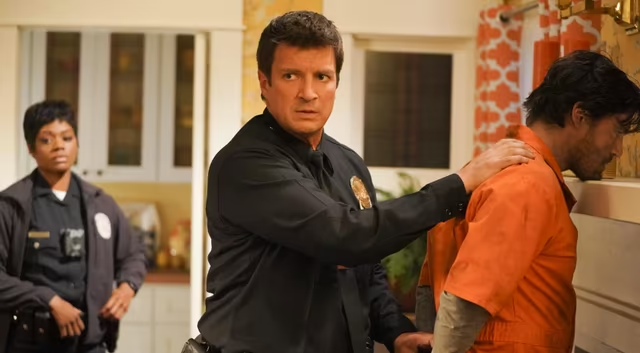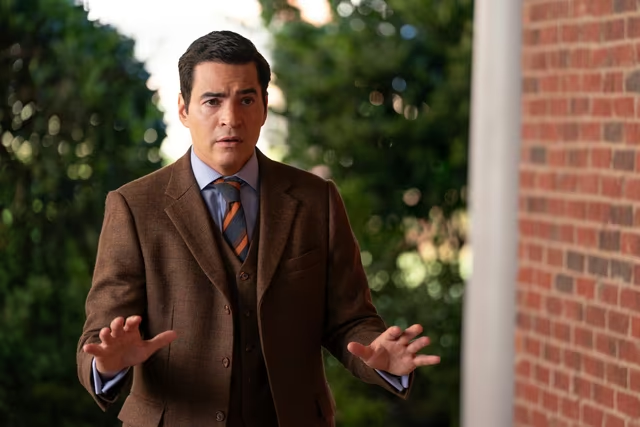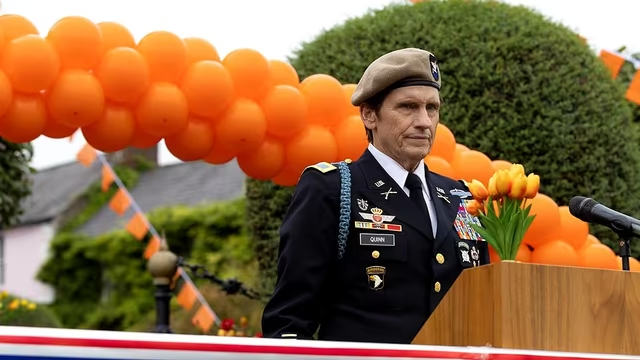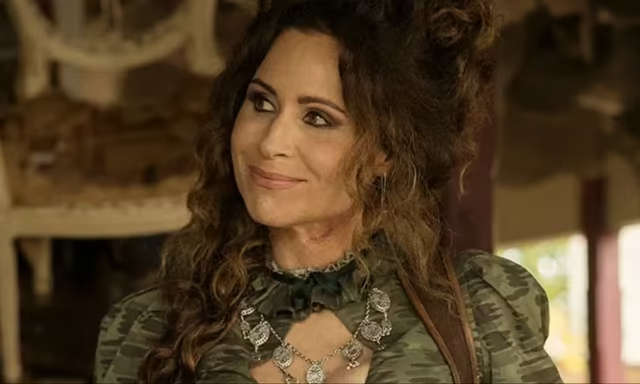If you click on a link and make a purchase we may receive a small commission. Read our editorial policy.
A history of Moon Knight's Dissociative Identity Disorder in Marvel Comics
I remember when I lost my mind. There was something so pleasant about that place.

In Moon Knight #14 by Jed MacKay, Alessandro Cappuccio, Rachelle Rosenberg, and Cory Petit, with a main cover by Stephen Segovia and Rosenberg, Moon Knight and his alters have a conversation with one another after Steven Grant re-emerged mid-battle. "You both know what people say about us," Marc Spector, a.k.a. Moon Knight, tells Jake Lockley and Grant. "I needed to show the people that Moon Knight wasn't crazy."
The latest Marvel Comics run of Moon Knight takes place in the wake of the Age of Khonshu, which saw Moon Knight taking out the Avengers while under the command of Khonshu. Yet, Moon Knight's recent conflict with the Avengers stems from being drawn reluctantly into Khonshu's machinations once again (even gods don't change unless they want to). Only this time, Khonshu doesn't want to be part of the superhero team—he's been there, done that—he wants to dismantle the team and take over the planet.
At the climax of the more recent Age of Khonshu arc, Moon Knight turns the power of the Phoenix Force against his patron deity. Khonshu is apprehended by the Avengers and imprisoned by the Aesir in Asgard. In Avengers #38 by Aaron, Ed McGuinness, Keith, and Petit, Black Panther invites Moon Knight to rejoin the Avengers. T'Challa believes they will be stronger together and able to stand against Mephisto. But Moon Knight declines, unwilling to be complicit in what he perceives to be their indifference to Mephisto's plans. Instead, Moon Knight resolves to return to his roots: street-level vigilantism.

The aftermath of the Age of Khonshu means several things for Mr. Knight, including establishing a new church designed in his image rather than Khonshu's and establishing himself as the 'high priest' of a deity from which he is estranged. According to dialogue with his Avengers-appointed therapist, he has accepted Khonshu's duty as his own. Moon Knight hopes to redeem himself in the eyes of the public and the Avengers.
As part of this attempt to prevent further harm towards those he cares about, Spector's core identity has essentially merged with the sometimes-distinct identity of Moon Knight, a departure from the majority of the most recent depictions of the character, who generally depict him as possessing at least one of his alters.
But in Moon Knight #14, the question of whether Spector's DID is really at the heart of their problems is discussed by Spector and his alters. "We're not crazy, Marc," Lockley assures him before Grant argues that the most significant issues in their life haven't stemmed from their Dissociative Identity Disorder (DID); they've come from Marc's lousy decision-making.
Since DID is at the forefront of the conversation, let's take a look at Moon Knight's (often changing) history regarding his alters in Marvel Comics.
Murky Merc Marc
The nature of Moon Knight's four identities seems to be settled: the cabbie Jake Lockley, ex-mercenary Marc Spector, millionaire playboy Steven Grant, and Khonshu avatar Moon Knight. However, the distinct personalities weren't fully formed when Moon Knight debuted in 1975's Werewolf by Night #32, 'The Stalker Called Moon Knight,' by Doug Moench, Don Perlin, Howie Perlin, Ray Holloway, and Phil Rache.
True, the costume and equipment commonly associated with Moon Knight were already present. Still, the story showed no sign of Moon Knight's alters. Instead, he functions mainly as an antagonist for Jack Russell. With a major emphasis on the silver in the suit, which poses a threat to the story's protagonist, Werewolf by Night #32 revealed that Moon Knight was commissioned by a shadowy organization known as "The Committee," who bestowed Moon Knight's costume (and also incorrectly referred to our hero as "Mark").

In 1976's Marvel Spotlight #28, 'The Crushing Conquer-Lord,' by Moench, Perlin, I. Watanabe, and I. Vartanoff, the idea of other identities is introduced through an informant's presentation slide (information stolen from The Committee). After mentioning the possibility of Werewolf-bite-induced super-strength, Weasel shares a slide that features a picture of Moon Knight's three other identities. However, the multiple identities are presented more as a spy tool used by Moon Knight to perform his heroics freely and operate under cover of night: One character mysteriously comments, "he could be anyone and anywhere."
Marc Spector emerges as the core personality
In the story 'Nights Born Ten Years Gone' by Moench, Bill Sienkiewicz, Klaus Janson, and Olyoptics that begins in 1979's Hulk Magazine #17, Moon Knight faces off against a hatchet-man serial killer who is revealed to be his brother, Randall Spector. This revelation dispels the possibility that anyone other than Marc Spector is Moon Knight's core identity (since an alter can't manifest a physical sibling, no matter how convincing their origin story or how deeply a person may have submerged the core identity).

In 1980's Moon Knight #1 by Moench, Sienkiewicz, Bill and Franki S., T. Orzechowski, and B. Sharen, the character gets an updated origin. After seemingly dying in the shadow of a statue of Khonshu in an Egyptian pyramid, Spector arises and declares himself "the Moon's Knight of vengeance." Later in this issue, it states that after "he regains his health," he "acquires three new identities." Like the cover, textual references to the identities as "they" suggest that the identities are distinct.
In 1981's Moon Knight #4 by Moench, Sienkiewicz, Klaus Janson, Parker, and Sharen, a retcon overwrites The Committee's role in Moon Knight's origins. As revealed by Frenchie, the loyal pilot infiltrated the organization and seeded the concept of the already-existing hero; this included Frenchie giving The Committee the Moon Knight costume they presented to "Mark." However, the question of the role Khonshu played in Spector's life remained. Did the Moon God exist, or was he the creation of Spector's divided mind? For many years, the answer to this question remained ambiguous. Khonshu's supernatural nature took a backseat to Moon Knight's street-level heroics, with psychology-fueled antagonists to keep him occupied.
As Moon Knight's story continued, however, his personal relationships degraded (a fact pointed out by Lockley, who cultivated the majority of this relationships, in Moon Knight (2022) #14). Over the course of Moon Knight volume one, Lockley's friends Gena and Crawley play important roles, at times proving instrumental in the success of Moon Knight's missions. But near the conclusion of the volume, in Moon Knight (1981) #34 by Tony Isabella, Bo Hampton, Rick Parker, and Christie Scheele, an attack at the diner where Gena works leaves her deeply unsettled.
In Moon Knight #35 by Isabella, Kevin Nowlan, Carl Potts, Joe Chiodo, Bob McLeod, Christie Scheele, and Rosen/Higgins, Gena states that she's considering taking a job offer from her brother in Houston and leaving New York City. Although Moon Knight tells her that she has family in NYC as well, Gena doesn't appear in 1985's Moon Knight volume two, and the identity of Lockley isn't even mentioned in any of the run's six issues: convincing support for Lockely's assertion that Spector is responsible for costing Moon Knight his friendships.
Four faces of death
The exact nature of the relationship between Moon Knight and Khonshu is laid bare in 2014's Moon Knight #1 by Warren Ellis, Declan Shalvey, Jodie Bellaire, and Chris Eliopoulos. This story confirmed that Spector was "raised from the dead by an outerterrestrial entity, and remade to some extent by the entity's operations." Subsequent dialogue somewhat implies that Spector's brain, having been "colonized by an ancient consciousness from beyond space-time," is the foundation for his four identities. Having been remade, he assigns to the four aspects of Khonshu (the impact of the god's effect on Spector's brain function has recently come back into play, but it would take a whole other essay to explain). But in 2017's Moon Knight #7 by Jeff Lemire, Greg Smallwood, Bellaire, and Petit, a flashback establishes that Spector's DID predates his resurrection at the feet of Khonshu. A young Spector meets a young Grant for the first time, but context clues firmly establish that Spector is the core identity: we see a bedroom with a sign reading "Marc S.," for example. Then, a page from his father's perspective confirms that Grant is visible only to the child.

In a subsequent scene from the issue, Spector and his father are at an appointment with a child psychologist. Dialogue in this scene further establishes that the Lockley identity has also already been defined. Spector is soon banished to the hallway, but his dropping eaves on the conversation between the doctor and his father is interrupted by his first encounter with Khonshu – which crucially occurs after Spector's DID has presented itself. The two distinct identities of Grant and Lockley have been introduced. In dialogue, Khonshu states that he, rather than the elder Spector, is Marc's father. He further predicts that Spector "come to him," and through this act, he "will be complete."
The nature of this First Contact with Khonshu is underscored by the fact that Khonshu confronts the young eavesdropping Spector at the intersection of three hallways. As distinct alters, Grant, Lockley, and Spector may be three divergent perspectives, but they all convene in one place. These three distinct identities are represented in the panel by the three distinct hallways and at the point of their convergence. The addition of Khonshu at this literal and metaphysical location creates the crucible that results in Moon Knight. Without any of these four crucial elements, the character of Moon Knight cannot be whole.
Interested in more superhero history? Check out this Popverse article: 11 times LGBT superheroes made national headlines (and where they are now)
Follow Popverse for upcoming event coverage and news
Find out how we conduct our review by reading our review policy
Let Popverse be your tour guide through the wilderness of pop culture
Sign in and let us help you find your new favorite thing.















Comments
Want to join the discussion? Please activate your account first.
Visit Reedpop ID if you need to resend the confirmation email.